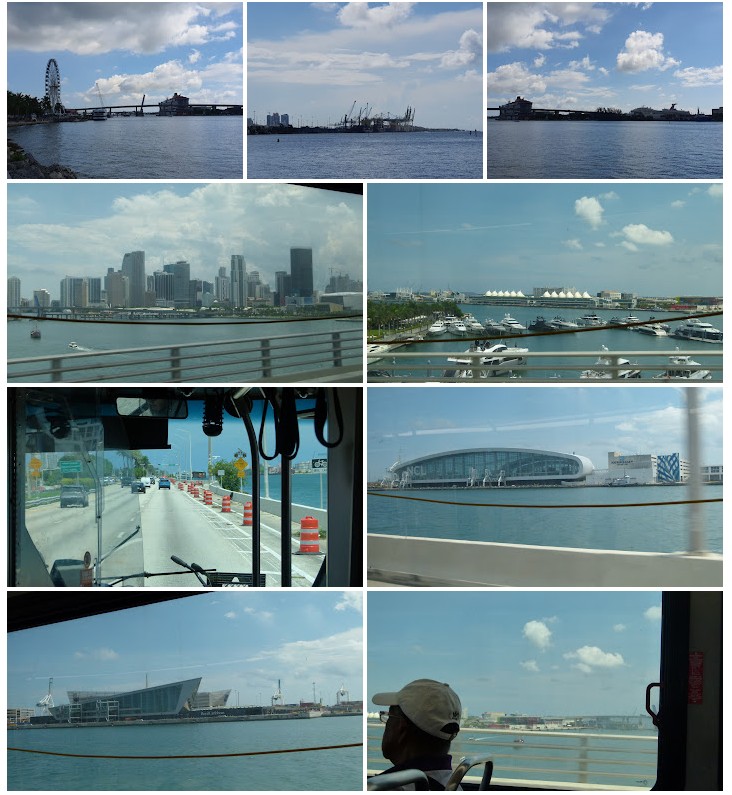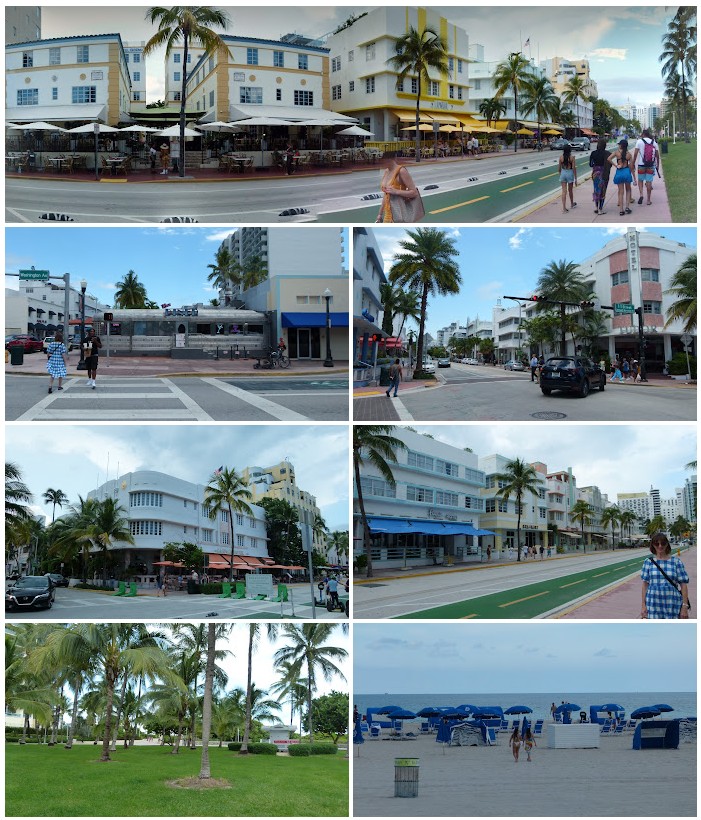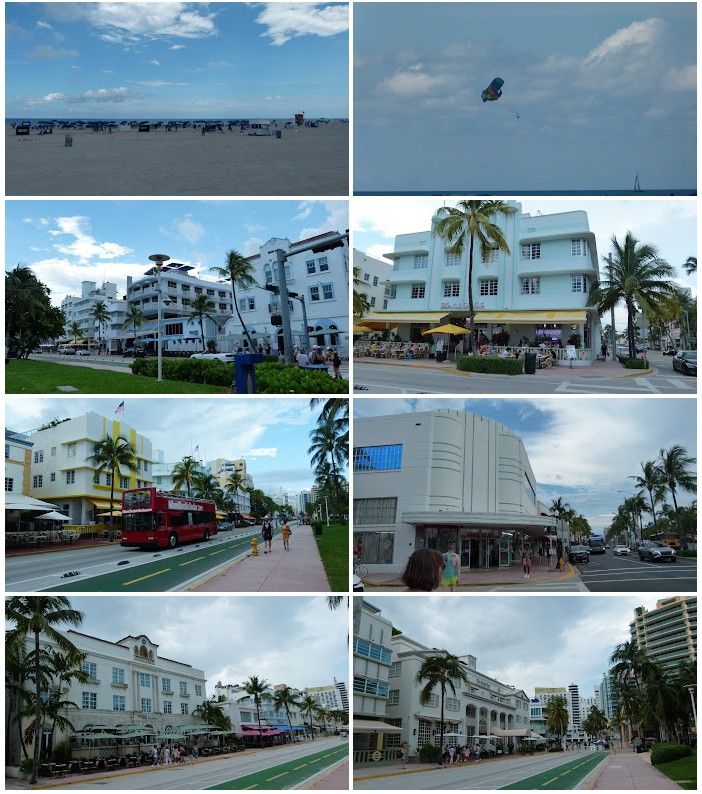Miami Beach(s) is(are) on the ocean side of a 20 mile long series of islands, separated from the mainland by Biscayne Bay. A series of causeways provides access, from the city, by car or local bus.

We took a local bus, allowing us the opportunity to get a better look around. The way over was interesting. Various cruise ships have a provisioning base here and there are many marinas and private pleasure craft, as well as container handling facilities. There's lot's of money being made.
There's an historic area at South Beach that's been saved from the high-rise development and is preserved as a 'special architectural zone', featuring the art-deco architectural style: 'The Art Deco Historic District'.

According to the website: "The styles of the 1920s and 1930s remain vibrant in the Art Deco Historic District in Miami Beach, home to the nation’s largest concentration of the sleek and bright architectural style. The district, which has been listed on the National Register of Historic Places since 1979, contains some 800 designated historic buildings, though some of them represent other modern architectural styles from different eras of Miami’s history."

At the rather grey beach there was little or no surf and most people sun-baked - deliberately. The air was hot, humid and oppressive. I unbuttoned my shirt - the closest I was prepared to get to joining the prevailing skin-fest.
We spent another day in Miami, wining and dining and so on, before calling an Uber to drive to Fort Lauderdale.
